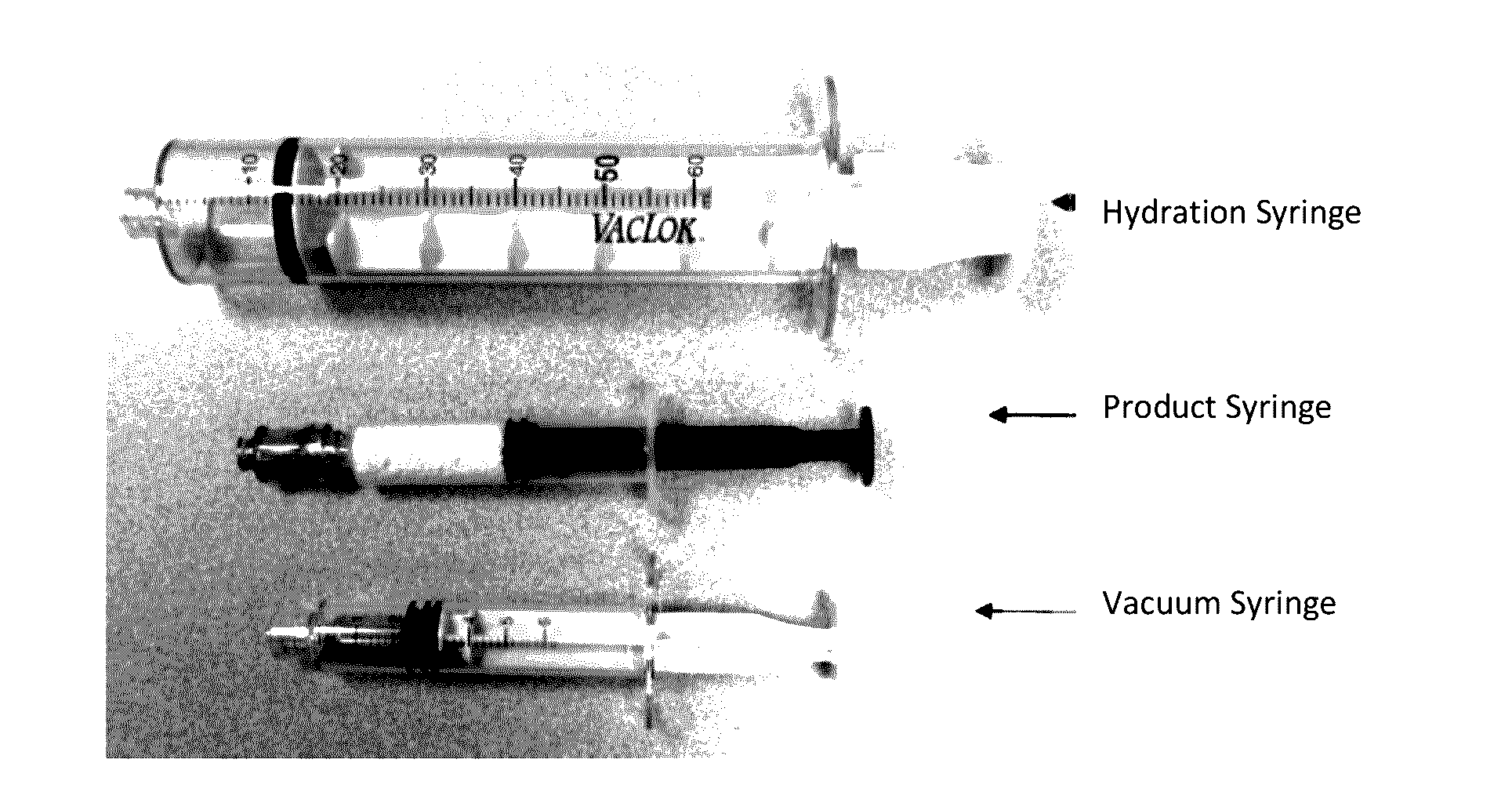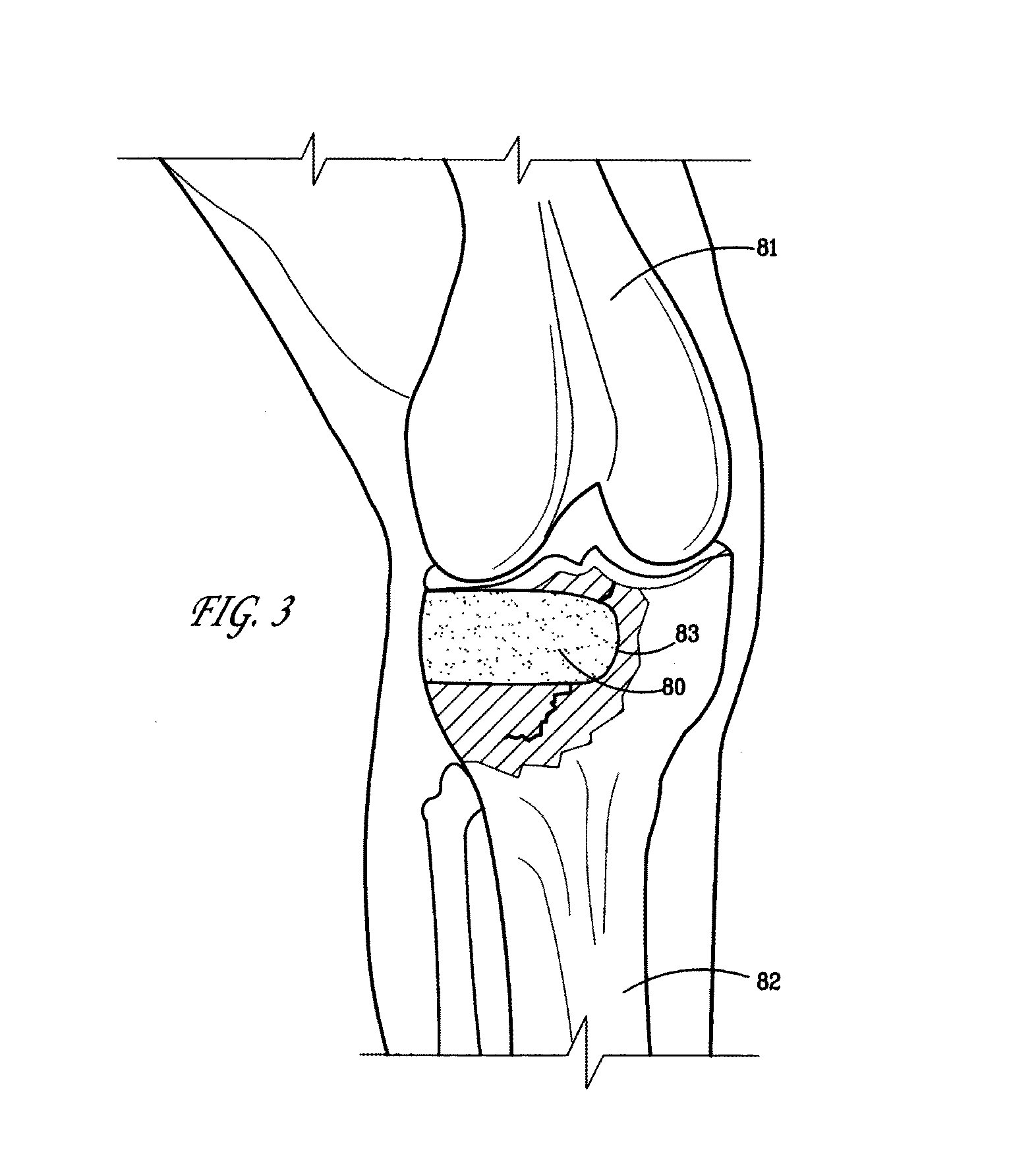Bioactive flowable wash-out resistant bone graft material and method for production thereof
a flowable, wash-out-resistant technology, applied in the direction of osteosynthesis devices, prosthesis, drug compositions, etc., can solve the problems of decreased wash-out resistance, material that does not optimally resorb, and numerous shortcomings of the attempt, so as to improve the wash-out resistance, improve the osteoconductive properties, and maintain physical integrity
- Summary
- Abstract
- Description
- Claims
- Application Information
AI Technical Summary
Benefits of technology
Problems solved by technology
Method used
Image
Examples
example 1
Manufacture of Dry Bone Graft Material
[0103]Porous calcium phosphate was prepared, and then was crushed and sieved to obtain morsels in the size range of 212 μm to about 850 μm.
[0104]Gelatin (Gelita 250 Bloom MedellaPro Type A NF pork skin) was dissolved in water at room temperature. The gelatin solution was refrigerated overnight at 2° C. to 8° C. The refrigerated gelatin was warmed in a warming chamber at 50° C. so that the center of the gelatin was from about 18° C. to 20° C., and the periphery of the container was from about 24° C. to 25° C. The warmed gelatin was cut into four roughly equal sized pieces and the gelatin was mixed for about 10 minutes. Next, calcium phosphate mineral particles having a size range of about 212 μm to about 850 μm was added to the gelatin at room temperature in five roughly equal increments. Next, nonporous Combeite was added in four roughly equal increments. The particle size of Combeit had a bimodal particle size distribution of 32 μm-90 μm and 90...
example 2-4
of Flowable Bone Graft Material
[0106]The morselized dry bone graft material from Example 1 was placed in a product syringe. Then the product syringe was connected to a vacuum syringe to expel out of the product syringe. After disconnecting the vacuum syringe from the product singe, a hydration syringe containing saline was connected to the product syringe. The plunger of the product syringe was depressed as the saline in the hydration was passed into the product syringe. There was a 5 second waiting period before it was further mixed by passing the material back to another syringe. The material was transferred back and forth between the product syringe and hydration syringe till it was properly mixed. The initial transfer of saline in the hydration syringe to dry bone graft material in the product syringe constituted as one pass and transferring back constitutes a second pass and so on. Each pass included 5 second waiting time before the material was transferred to another syringe.
[...
examples 6-11
[0110]Flowable bone graft material was prepared in the same manner as in Example 2, except sodium carboxymethyl cellulose used had the following viscosities, degrees of substitution and amounts of as provided below in Table 4:
TABLE 4Amount(wt %)based onViscosity Degrees of dry fillFormulation(MPA-s)SubstitutionweightExample 2400-8000.710Example 6300-8000.910Example 7300-8000.97.5Example 8300-8000.95Example 9400-8000.79.1Example 10400-8000.78.5Example 11400-8000.78.1
PUM
| Property | Measurement | Unit |
|---|---|---|
| particle size | aaaaa | aaaaa |
| length | aaaaa | aaaaa |
| particle size | aaaaa | aaaaa |
Abstract
Description
Claims
Application Information
 Login to View More
Login to View More - R&D
- Intellectual Property
- Life Sciences
- Materials
- Tech Scout
- Unparalleled Data Quality
- Higher Quality Content
- 60% Fewer Hallucinations
Browse by: Latest US Patents, China's latest patents, Technical Efficacy Thesaurus, Application Domain, Technology Topic, Popular Technical Reports.
© 2025 PatSnap. All rights reserved.Legal|Privacy policy|Modern Slavery Act Transparency Statement|Sitemap|About US| Contact US: help@patsnap.com



